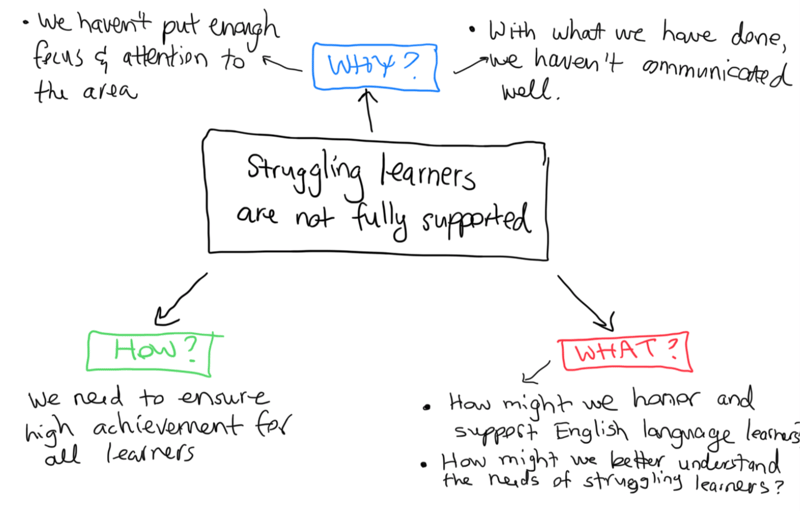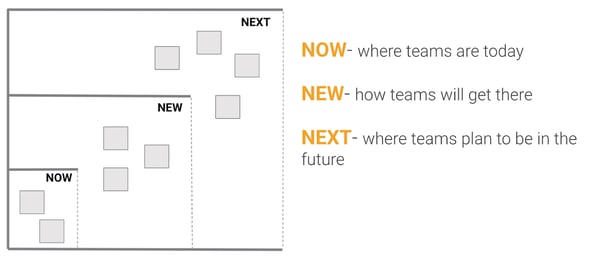How do we design the schools of the future, today? Designing innovative structures and systems takes a similarly innovative approach, otherwise, we’d design the same systems we already have all over again. In a series of blog posts, we have described the steps to creating a responsive strategic plan. We’ve taught you how to assemble a superhero team and how to identify and collect data from your stakeholders. Now, what do you actually DO to design a responsive strategic plan that won’t collect dust on your office shelf? Even if you are not going through a strategic plan redesign but are working towards implementing your current plan or designing the rollout of a new initiative within your plan, we want to show you how to plan for change and not perfection.
1. Review the data you’ve collected for trends
At this point in your design process, you should have a wealth of data that has emerged from surveys, empathy interviews, family forums as well as data like state test scores and graduation rates. Assemble your steering team to review the data by taking both cross-sections of stakeholders and also cross-sections of type of data (an outside partner like Education Elements can be a helpful neutral and analytical perspective at this time).

Here are some example trends that you might find from reviewing these cross-sections:
- There are not enough structures to support community wellness and student mental health
- There is likely to be substantial growth in the number of school-aged children in the next 5 years
- There should be a focus on maintaining a high level of academic programs
- There is a desire for additional supports for struggling learners
2. Try to better understand why the trends are happening and why it matters
Ask yourself and your teams:
- WHY - Why is this trend happening?
- HOW - How does this trend matter?
- WHAT - What questions does this trend lead us to wonder about?

As you’re beginning your design process, you’ll want to ensure you’re involving and focusing on those who have identities often marginalized by design. Review the Design Justice Network’s Principles as well as Universal Design for Learning Guidelines as you’re undergoing your empathy process.
Deeper Dive: Check out how South Brunswick School District developed a responsive strategic plan for their district in this video.
3. Be divergent and wildly brainstorm
Human-centered design thinking encourages you at this point in the design process to “ideate” or wildly brainstorm as many possible solutions as possible. But this can be tough for many of us. In this video, Anne Manning, instructor at the Harvard Extension School, explains the difference between divergent and convergent thinking and the challenge it poses for many design teams. Divergent thinking is the process of brainstorming and coming up with ideas, while convergent thinking involves reflecting on those ideas. Manning challenges us to “spend a certain amount of time coming up with ideas, not judging them. Separate that completely from the process of evaluating them.” For anyone who has watched or participated in improv comedy, this should be familiar. As Tina Fey says in her memoir Bossypants, the first rule of improv is to agree and the second rule is to build upon that agreement (“Yes, and…”). At this point, all ideas are on the table and none should be discounted until later in the process because even if an idea is too wacky to implement, it might lead to another more feasible idea. Explore IDEO’s design thinking mindsets for even more ideas of how to embrace this new way of thinking.
“Spend a certain amount of time coming up with ideas, not judging them. Separate that completely from the process of evaluating them.”
- Anne Manning, instructor at the Harvard Extension School
Related Resource: Responsive organizations approach work in a strategic and flexible manner. Check out our Responsive Org Playbook to see how our company functions as a network of responsive teams, and transform both your individual leadership practice, as well as the practices of your teams.
4. Begin to bucket ideas using “Now, New, Next”
Make sure you see the large number of ideas you’ve generated as an asset and not a liability. Begin to cluster ideas in terms of their potential impact and feasibility, given what you’re already doing in your district. One way to cluster these would be to consider which ideas fall into the “Now” or where the team is today, the “New” or ideas to try in 1-2 years, and the “Next” or goals to build to in 3-5 years.

In the next installment of this blog series, we will dive deeper into how to prioritize initiatives using a planning canvas and instruments to gauge the ease versus impact of the various initiatives in your plan. Stay tuned! In the meantime, check out our infographic on strategic planning teams. In it, you'll learn which teams are needed for the strategic planning process, and how to recruit for them.





